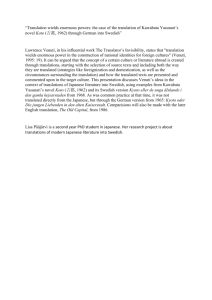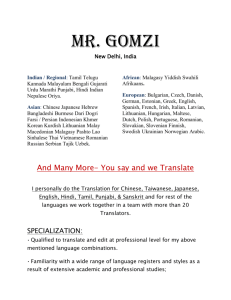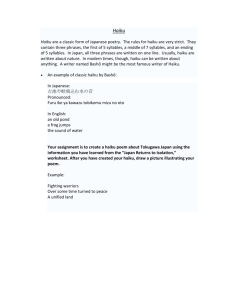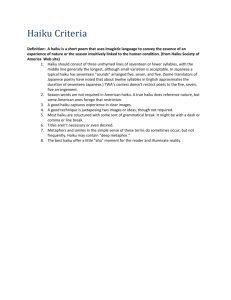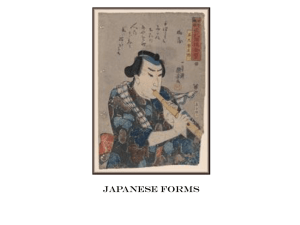Asian literary texts in the Baltic states: translations
advertisement
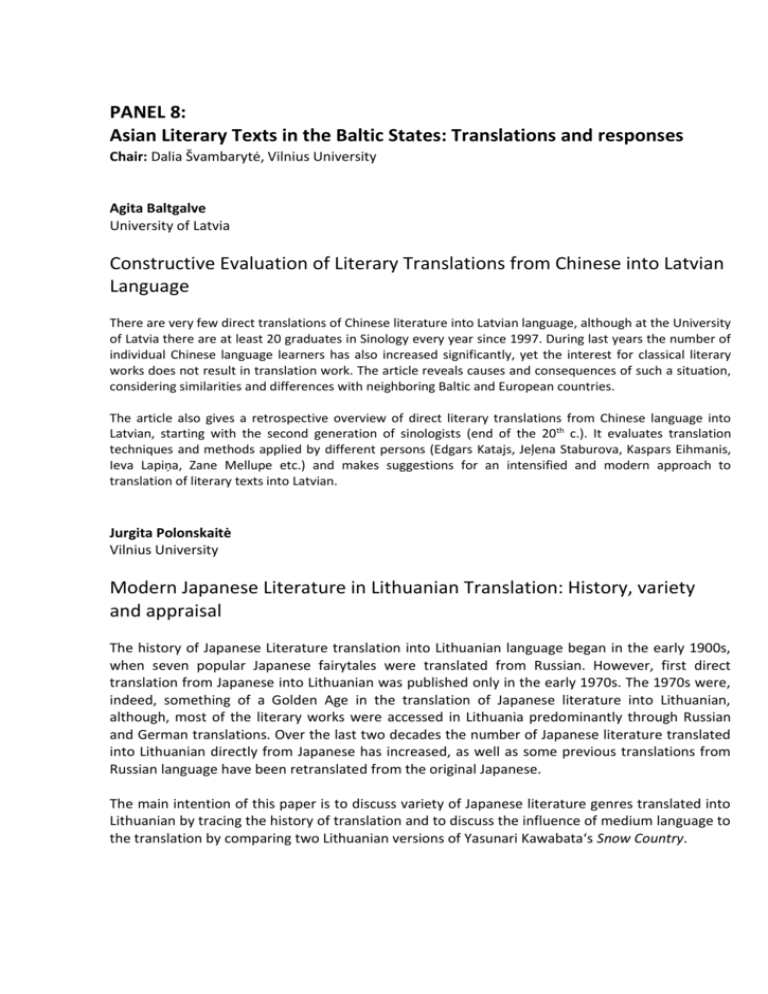
PANEL 8: Asian Literary Texts in the Baltic States: Translations and responses Chair: Dalia Švambarytė, Vilnius University Agita Baltgalve University of Latvia Constructive Evaluation of Literary Translations from Chinese into Latvian Language There are very few direct translations of Chinese literature into Latvian language, although at the University of Latvia there are at least 20 graduates in Sinology every year since 1997. During last years the number of individual Chinese language learners has also increased significantly, yet the interest for classical literary works does not result in translation work. The article reveals causes and consequences of such a situation, considering similarities and differences with neighboring Baltic and European countries. The article also gives a retrospective overview of direct literary translations from Chinese language into Latvian, starting with the second generation of sinologists (end of the 20th c.). It evaluates translation techniques and methods applied by different persons (Edgars Katajs, Jeļena Staburova, Kaspars Eihmanis, Ieva Lapiņa, Zane Mellupe etc.) and makes suggestions for an intensified and modern approach to translation of literary texts into Latvian. Jurgita Polonskaitė Vilnius University Modern Japanese Literature in Lithuanian Translation: History, variety and appraisal The history of Japanese Literature translation into Lithuanian language began in the early 1900s, when seven popular Japanese fairytales were translated from Russian. However, first direct translation from Japanese into Lithuanian was published only in the early 1970s. The 1970s were, indeed, something of a Golden Age in the translation of Japanese literature into Lithuanian, although, most of the literary works were accessed in Lithuania predominantly through Russian and German translations. Over the last two decades the number of Japanese literature translated into Lithuanian directly from Japanese has increased, as well as some previous translations from Russian language have been retranslated from the original Japanese. The main intention of this paper is to discuss variety of Japanese literature genres translated into Lithuanian by tracing the history of translation and to discuss the influence of medium language to the translation by comparing two Lithuanian versions of Yasunari Kawabata‘s Snow Country. Dalia Švambarytė Vilnius University Haiku in Lithuanian: Translations, interpretations, compositions Haiku has gained international appeal long ago. Lithuania is no exception when it comes to haiku translations, haiku contests, haiku projects dedicated to special events, online introductions to Japanese poetry usually condensed down to haiku, and the instructions on how to write a haiku verse in three lines even though the Japanese haiku is a single-line poem. This contradiction leads to the question of whether or not the Lithuanian haiku in three lines and the Japanese haiku in one line represent separate genres. How much theoretical framework matters in creating a verse which originates in different tradition? How many syllables should a Japanese haiku contain when translated into Lithuanian? And, finally, what is the perfect length for a haiku opera? By posing these questions the paper seeks to address the broader subject of cross-cultural translatability and the commodification of poetic production.
